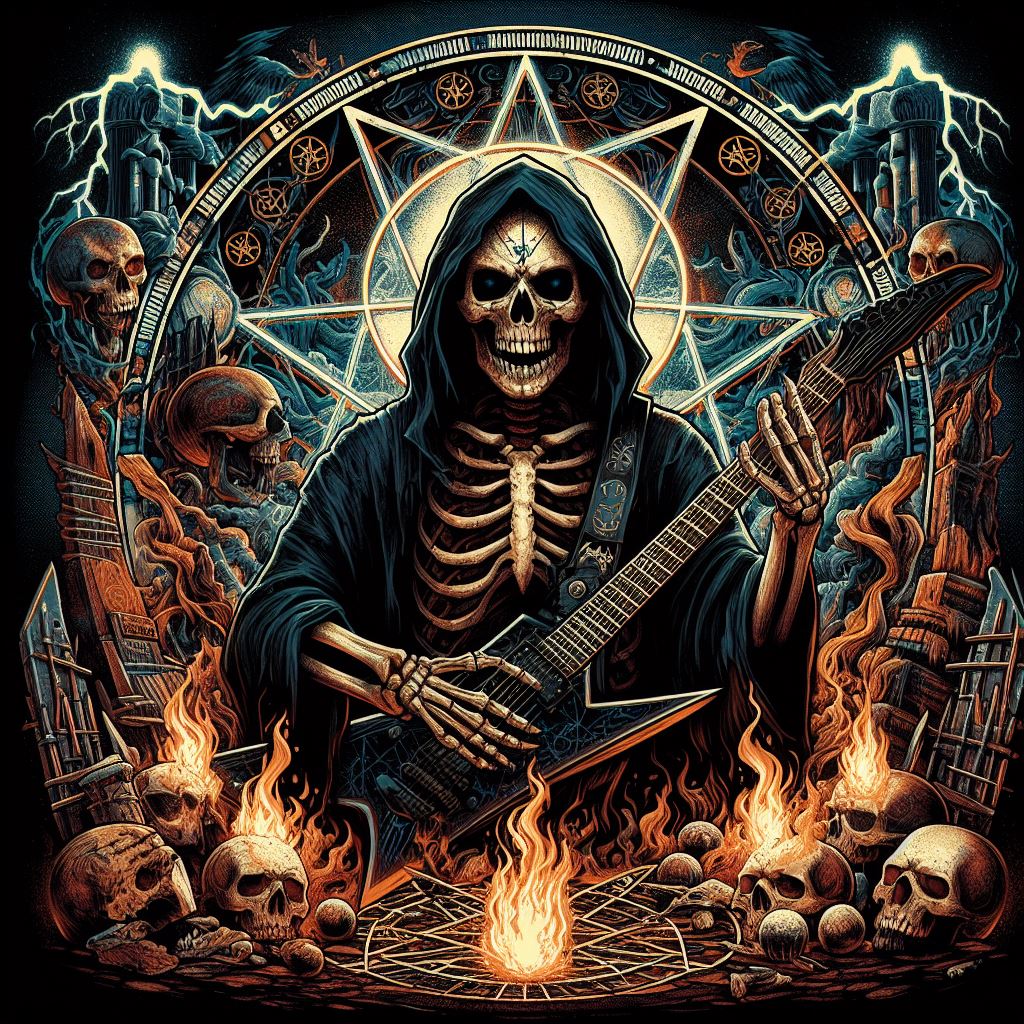Helloween, the German titans of power metal, have carved a legendary path through the metal scene for nearly four decades. Their story is one of evolution, internal struggles, and an unwavering commitment to creating music that’s both powerful and melodic. Let’s delve into the rich history of this influential band.
Early Days and Speed Metal Roots (1984-1986)
The band’s seeds were sown in 1984 in Hamburg, Germany. Originally named Iron Fist and later Second Hell, they eventually settled on the catchy Helloween. The founding members – Kai Hansen (vocals/guitar), Michael Weikath (guitar), Markus Grosskopf (bass), and Ingo Schwichtenberg (drums) – signed with Noise Records and unleashed their self-titled EP in 1985.
Their early sound leaned towards speed metal, characterized by breakneck tempos, aggressive riffs, and Hansen’s raspy vocals. Tracks like “Metal Invaders” and “Dr. Stein” showcased their raw energy, quickly earning them a dedicated following in the burgeoning European metal scene. The band’s debut full-length, “Walls of Jericho,” released later that year, solidified their reputation as a force to be reckoned with.
The Rise of Kiske and Power Metal (1986-1989)
Feeling creatively restricted by his dual role of vocalist and guitarist, Hansen decided to step back from singing duties. After an extensive search, Michael Kiske, a young singer with a soaring, operatic voice, joined the band in 1986. This change in direction proved pivotal. Kiske’s vocals added a whole new dimension to their sound, ushering in an era of power metal.
Their first album with Kiske, “Keeper of the Seven Keys Part 1” (1987), was a commercial and critical breakthrough. Tracks like the iconic “I’m Alive” and the epic “Halloween” showcased their newfound melodic approach, laced with intricate guitar work and soaring vocals. The follow-up, “Keeper of the Seven Keys Part 2” (1988), cemented their status as power metal pioneers. Songs like “Eagle Fly Free” and “Keeper of the Seven Keys” remain staples in their live set and continue to inspire countless bands.
Internal Turmoil and Transitions (1989-1993)
Despite their success, tensions arose within the band. Hansen, frustrated by the band’s more commercial direction, departed in 1989 to form Gamma Ray. He was replaced by guitarist Roland Grapow and Pink Cream 69 vocalist Pinky D. Rodrigues. This new lineup produced two albums, “Pink Bubbles Go Ape” (1991) and “Chameleon” (1993), which experimented with a more keyboard-driven sound, alienating some fans.
Meanwhile, internal strife continued, with Kiske and Schwichtenberg facing personal struggles. Kiske was eventually let go, and Schwichtenberg departed due to health issues. With the band seemingly on the verge of collapse, the future looked uncertain.
The Deris Era and Rebuilding (1994-2000)
Undeterred, Weikath and Grosskopf regrouped, recruiting vocalist Andi Deris (ex-Pink Cream 69) and drummer Uli Kusch. This lineup marked a turning point. Deris brought a powerful, yet more grounded vocal style, and the band found renewed energy. Albums like “Master of the Rings” (1994) and “The Time of the Oath” (1996) showcased a heavier, more mature sound, while retaining their signature melodic core.
The New Millennium and Reunions (2000-Present)
The band continued to release albums throughout the first decade of the new millennium, with varying critical and commercial success. However, in 2000, a dream came true for many fans – Kai Hansen returned to the fold for a series of reunion shows alongside Kiske. This “Pumpkins United” tour was a massive success, proving the enduring popularity of the classic era.
The success of the reunion tour led to further collaborations. In 2013, the “Pumpkins United” project returned, this time as a full-fledged band with Hansen, Kiske, Deris, Weikath, and Sascha Gerstner (drums). This unique six-man lineup released two critically acclaimed albums, “United Alive” (2017) and “Pumpkins United” (2019).
Today, Helloween remains an active force. With Deris still at the helm and a lineup featuring Kai Hansen (guitars/vocals), they continue to tour and release new music, much to the delight of their legions of fans.

Leave a Reply
You must be logged in to post a comment.